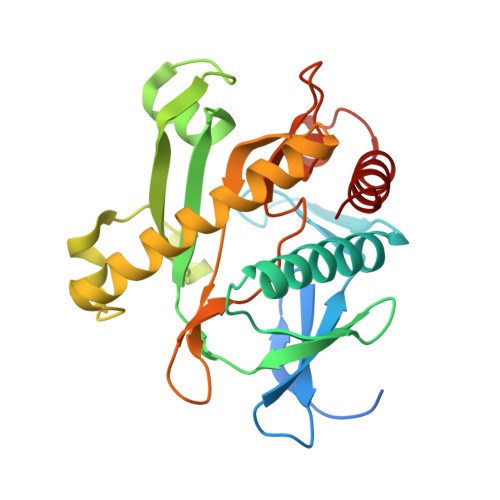Structures of SAICAR synthetase (PurC) from Streptococcus pneumoniae with ADP, Mg(2+), AIR and Asp.
Wolf, N.M., Abad-Zapatero, C., Johnson, M.E., Fung, L.W.(2014) Acta Crystallogr D Biol Crystallogr 70: 841-850
- PubMed: 24598753
- DOI: https://doi.org/10.1107/S139900471303366X
- PubMed Abstract:
Streptococcus pneumoniae is a multidrug-resistant pathogen that is a target of considerable interest for antibacterial drug development. One strategy for drug discovery is to inhibit an essential metabolic enzyme. The seventh step of the de novo purine-biosynthesis pathway converts carboxyaminoimidazoleribonucleotide (CAIR) and L-aspartic acid (Asp) to 4-(N-succino)-5-aminoimidazole-4-carboxamide ribonucleotide (SAICAR) in the presence of adenosine 5'-triphosphate (ATP) using the enzyme PurC. PurC has been shown to be conditionally essential for bacterial replication. Two crystal structures of this essential enzyme from Streptococcus pneumoniae (spPurC) in the presence of adenosine 5'-diphosphate (ADP), Mg(2+), aminoimidazoleribonucleotide (AIR) and/or Asp have been obtained. This is the first structural study of spPurC, as well as the first of PurC from any species with Asp in the active site. Based on these findings, two model structures are proposed for the active site with all of the essential ligands (ATP, Mg(2+), Asp and CAIR) present, and a relay mechanism for the formation of the product SAICAR is suggested.
Organizational Affiliation:
Department of Chemistry, University of Illinois at Chicago, Chicago, IL 60607, USA.


















